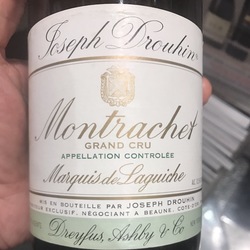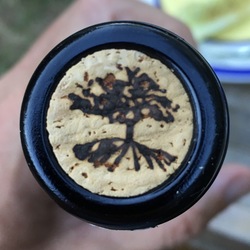Subsoil
Subsoil
Columbia Valley Chardonnay 2021
Seemed a bit oaky at first, but was really nice with the shrimp and scallop scampi. Very enjoyable. — 2 years ago
Benoït Dossot
Champagne Clandestin Les Semblables Austral Brut Nature Pinot Noir
100% Pinot Noir. Harvested 2017, disgorged 2019. Brut nature and very dry.
Pinot Noir made from 20 to 35 year old vines planted in limestone soil and Kimmeridgian subsoil lying 200 metres above sea level. The vines are cultivated using organic agriculture and the harvest is carried out manually when the grapes reach optimum ripeness.
Once the Clandestin Les Semblables Boréal grapes reach the winery, they undergo a direct pressing in whole bunches and alcoholic fermentation takes place with native yeasts. The wine is then aged in French oak barrels and, without refining or filtering, it undergoes a second fermentation in the bottle with its lees for a minimum of 24 months. Finally the champagne is disgorged with a dosage of 0 gr/l.
Made in the AOC Champagne, Clandestin Les Semblables Boréal is the perfect example of the best purity and expression of the terroir. Deep power and concentration, without adding or taking away anything. — 4 years ago
Domaine Laroche
Les Blanchots Chablis Grand Cru Chardonnay 2021
‘Les Blanchots’ is a Grand Cru climat in Chablis, situated on a steep, southeast-facing hillside known for its white clay subsoil (after which ‘Les Blanchots’ takes its name) sitting above Kimmeridgian limestone, comprised of clay, chalk and fossilized oyster shells. 🙌🏻
This wine fermented in a combination of French oak barrels (70%) and stainless steel (30%) followed by 16 months aging on the lees in the cellars of a medieval monastery (L’Obédiencerie) acquired by the Laroche family in 1985.
It is medium lemon in appearance with an elegant expression of lemon peel, fresh white peach, apple, honeydew, star fruit, kumquat, white blossom, seashell, crushed stone, wet slate, struck match, toast, cream, and vanilla characteristics.
On the palate, it offers vibrant, racy acidity and a well-balanced structure.
It is superb! 😆😆😆 — a year ago

Mercer Wines
Subsoil Horse Heaven Hills Red Blend
Artsy label, but not exactly soil looking. Lighter red than some Cab based blends out there. Smells good. Desert wind (sage and creosote) with red berries and faint latex paint. Smooth as silk in the mouth. Flavors are nice. Complex with more desert plants meeting cherry compote and berry desserts. This really works pretty well. A WA winner wine! — 2 years ago
Subsoil
Horse Heaven Hills Cabernet Sauvignon 2018
very subtle pleasant — 4 years ago
Laura Lardy
Beaujolais Villages Blanc Chardonnay 2019
Was very surprised by this wine – don’t think I’ve had a white Beaujolais that’s Chard. Maybe one of the last QPR Burgs! Grapes are hand harvested and sorted, then directly pressed into neutral Demi-muid (600 L) where they ferment spontaneously and then rest for three months. No fining, lightly filtered and sulfured at bottling. Clay – limestone on Granite subsoil, vines are 4–15 years old. Organic.
4th generation winemaking family, ima check out her father Lucien and brother Yohan’s wines too…CT90. **$25 ** — 2 years ago

Tiberio
Trebbiano d'Abruzzo
2021 vintage.
Brilliant bright gold in colour.
White flowers and anice on the nose.
Flavours of white grapefruit, almonds and jasmine with bright acidity and minerality on the finish.
The vineyard is mainly limestone and gravel-sand subsoil.
The average vine age is 62 years. — 4 years ago
Subsoil
Horse Heaven Hills Chardonnay
Delicious. — 4 years ago
Subsoil
Horse Heaven Hills Cabernet Sauvignon Blend
Really nice fruit but long — 5 years ago






Bob McDonald
From a Delectable library photo. This is the 2015 vintage. Sweeter aromatics compared to the 2015 Echezeaux. An even more gorgeous scented nose. That sweetness carries through to the medium bodied palate. A little more flesh and density. The old vine fruit averaging 55 years. The name however does not imply greater quality over the Echezeaux. Jasper Morris MW has sometimes preferred Echezeaux to Grands Echezeaux in a given vintage. “Interestingly the vineyard is east facing with a thickish layer of well drained clay soil above the same downwash subsoil of Bajocian limestone as Le Musigny - a characteristic not shared by the rest of Echezeaux. This can impart a fuller texture to the wines of Grands Echezeaux over its neighbour as well as a greater consistency from one vintage to the next.” sourced from Inside Burgundy by Jasper Morris MW. — 3 months ago